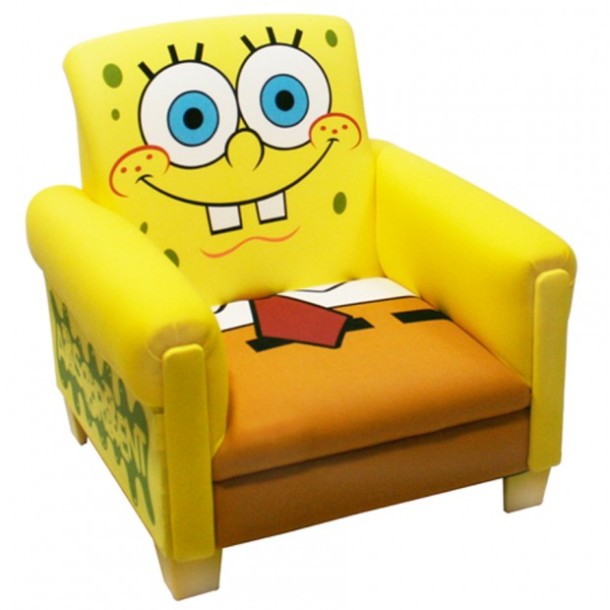The other day my wife Diane said that her back was hurting, but she felt better when she sat in the car. That’s probably because the driver’s seat is the best, and most expensive, chair we own. It certainly is the only chair we have that can be adjusted eight different ways.
One of the few things I remember seeing in Washington D.C. was the exhibit featuring Archie Bunker’s favorite chair, from the 1970’s television series, All in the Family. In 1978, Norman Lear, the show’s creator, donated Archie and Edith’s chairs to the Smithsonian Museum of American History, when he thought the series was being cancelled. To his surprise it was renewed for another season and he paid thousands of dollars to make exact replicas of the chairs that originally cost only about $8.00 each. The notion of a family member being territorial about a shabby, but treasured, chair, is something familiar, that surfaced again on Fraizer.
I personally can understand Archie’s reverence for his favorite chair. When Diane and I started dating in the 1970’s, we were both just out of school, poor, and worked for not-for-profits My apartment was sparsely furnished with second-hand furniture from my parent’s attic and Diane had also accumulated whatever furniture she could. I remember complaining to her that whenever I visited, she didn’t have a decent chair to sit in. It’s hard to look very cool sitting in a bean bag chair. I kept falling over.
Besides comfort, chairs are also symbolic of social status. Having a “chair at the table” has come to mean that you belong to a group and have co-equal status. A few years ago when we asked our daughter what birthday present our youngest granddaughter, Rosie, would like for her second birthday, our daughter said that Rosie really wanted her own chair. Rosie couldn’t wait to escape from her accursed “high chair” , a symbol of babyhood, and take her rightful place at the table with her siblings, as a peer, rather than a second class citizen.
Of course, where you’re seated and the nature of your chair also says something about your status. People seated at the head of the table generally have the most power. It is said that Merlin created King Arthur’s Round Table to avoid quarrels among the knights as to who had the highest status, although they still probably squabbled over who got to sit closest to the King.
Chairs took on a political dimension last year at the Republican National Convention, when Clint Eastwood delivered his monologue to an empty chair, intended to represent President Obama. Obama’s reelection team countered by tweeting out a photo of the president sitting in his Cabinet Room chair, and saying “this seat’s taken.” These theatrics may not have made much difference in the election , but addressing an empty chair is a time-honored technique in Gestalt psychotherapy (another 70’s phenomena). It was used to help patients resolve “unfinished business” with others, or even among different aspects of themselves.
Writing in the on-line Magazine Jacobin, design student Colin McSwiggen says that sometime in the Stone Age between 6,000 and 12,000 years ago, people of high-status began sitting on raised platforms containing some sort of backrest. He says, “This was an effective way to signify elevated status among people who otherwise sat on the ground.” Throughout history the elevation, size, composition, and expense of a seating device has conferred status. Even today many companies have strict policies on who can order different kinds of office chairs. Some only allow high backed “executive chairs” for employees above a certain rank in the hierarchy. On Star Trek, it’s obvious that the captain has the only decent chair and view of the wide-screen TV.
Having a designated seat is also related to status, like having a personal parking place. Arthur’s Round Table had one special seat with a chair that was marked “Siege Perilous”, which means “the dangerous or perilous seat”. Only the singular knight who was destined to find the Holy Grail could sit there safely. If was fatal for anyone to try.
I was once helping out at an outdoor festival and brought my own comfortable wooden folding chair to sit in because I didn’t care for the small metal chairs provided. Every time I got up to do something and came back, the same guy was sitting in my chair. I sure could have used some of that Siege Perilous stuff.
According to environmental psychologist Sally Augustine, when people sit in a recliner and stretch out they generally feel more powerful, confident, and have a higher tolerance for risk taking. They also get less angry when provoked by others. Sitting in a confined or restricted posture, however has the opposite effect. Maybe this is the source for the sit-com folk wisdom that suggests it is best to confront mom or dad with bad news at the end of the day when they are relaxing in their recliner, preferably with a potent cocktail in hand.
According to the health quiz in Parade Magazine, that Diane gave me last Sunday, these days chairs are actually considered to be even more dangerous to your health than cigarettes. Research by The American Cancer Society shows that sitting is a significant risk factor predicting how long you’ll live. One recent study found sitting more than six hours a day increased female mortality by 37% and male mortality by 17%. Prolonged sitting also exacerbates back pain, which afflicts 80% of adults, as well as neck pain, balance, and flexibility.
Writing in the on-line Magazine, Jacobin, McSwiggen says, “No designer has ever made a good chair, because it is impossible. Some are better than others, but all are bad.” He says they are not only a health hazards that we are addict to, but they are also “inextricably tied… to our culture of status-obsessed individualism”. .
McSwiggen says that uncomfortable chairs can create pressure that leads to soreness, poor posture, restricted circulation, impeded respiration, and intestinal dysfunction. Even comfortable chairs encourage long durations of static positions, which in turn stress the spine, weaken muscles, and cause circulatory problems.
The science of ergonomics unfortunately has shown little consensus regarding the best chair design, although some progress has been made with Scandinavian innovations such as ball chairs, kneeling chairs, and chairs that encourage sitting in different positions. Even most of these, however, are not compatible with current workspace designs or acceptable in business settings due to appearance.
Some experts suggest abandoning the chair altogether. In the 1980’s Jerome Congleton, from Texas A&M, created a standing desk and among the newer products being marketed are standing work stations. There is a famous photograph of President John F. Kennedy looking out of the south window of the oval office. He was standing over a table reading newspapers. Due to his wartime back injury, President Kennedy couldn’t sit in a chair for more than a short time without walking around. He would often work and read standing up, leaning over his desk. This may be the new work model for many people– working while standing and/or taking frequent breaks for walks.
I’ve thought about trying one of the exercise ball chairs at work. I hear, however, that they are supposed to get sticky in warm weather. I’m also afraid of accidently falling off and dribbling down the stairs.
Based on a column that orginally appeared in the Southern Indiana News-tribune
Related articles
- Desk Posture (seatingzone.wordpress.com)
- -Accent Chair (furnitureofamericaaccentchairp2sale.wordpress.com)
- Good Reasons Your Laptop Or Computer Chairs Break (computermart1.wordpress.com)

